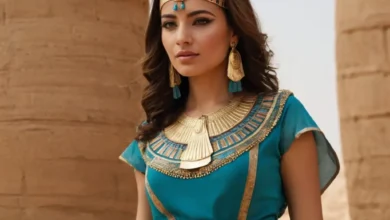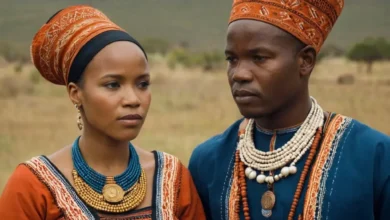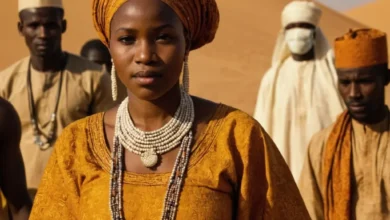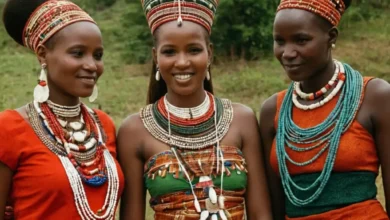Guinean Traditional Clothing
Guinea, a nation nestled in West Africa, is a tapestry woven with rich cultural threads. Its vibrant tapestry is reflected in the diverse ethnic groups and their unique traditions, with clothing playing a pivotal role in expressing cultural identity.
This article delves into the fascinating world of Guinean traditional clothing, exploring its history, significance, and the diverse styles that represent the nation’s rich heritage.
A Symphony of Colors and Patterns: The Language of Clothing
Guinean traditional clothing is more than mere fabric; it is a language, a visual narrative that speaks volumes about an individual’s ethnicity, social status, and even marital status. The vibrant hues, intricate patterns, and elaborate embellishments are not just aesthetically pleasing but also hold deep symbolic meaning. Each ethnic group in Guinea has its distinctive clothing styles, contributing to the country’s rich sartorial heritage.
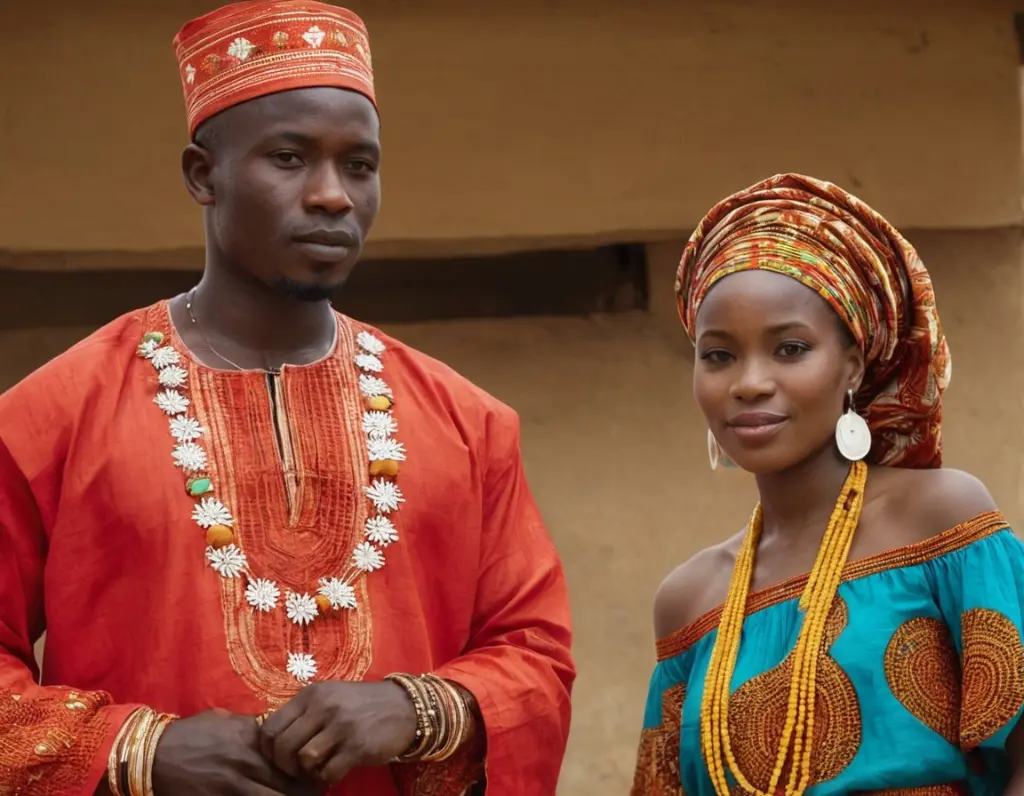
The Colorful Canvas of Guinean Culture
From the vibrant reds and yellows of the Susu to the earthy browns and blues of the Fulani, Guinean clothing is a symphony of colors. Each color carries its own significance, with red often symbolizing courage and strength, while blue represents peace and tranquility. The intricately woven patterns, often geometric or floral, are not merely decorative but carry ancient stories and beliefs.
See also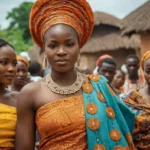 Ivorian Traditional Clothing: A Blend of Diverse Ethnic Styles and Influences
Ivorian Traditional Clothing: A Blend of Diverse Ethnic Styles and Influences
For example, the Toma people, renowned for their artistry, use indigo dye to create intricate patterns on their clothing, known as ndoma. These patterns often depict animals, plants, and symbols that hold spiritual significance. The Kissi, known for their vibrant textiles, use a technique called mud cloth where the fabric is soaked in mud and then decorated with dyes. This unique process creates a distinctive and highly prized textile.
A Glimpse into Social Hierarchy
Beyond ethnicity, Guinean clothing also reflects social status and hierarchy. In some communities, the intricate embroidery and elaborate embellishments worn by elders signify their wisdom and experience. The size and quality of fabrics used can also indicate wealth and social standing. In the past, certain garments were exclusive to chiefs and royalty, serving as markers of their authority and power.
For instance, the Malinké people, known for their meticulous craftsmanship, use finely woven fabrics and intricate embroidery in their ceremonial clothing. This distinguishes them from other communities and signifies their cultural importance.
The Evolution of Guinean Traditional Clothing: From Past to Present
While the roots of Guinean traditional clothing run deep, the styles have evolved over time, incorporating modern influences without losing their essence. While traditional clothing remains a significant part of daily life, especially in rural areas, it has also found its way into the world of fashion. Young designers in Guinea are drawing inspiration from their heritage, reinterpreting traditional styles and incorporating modern materials and techniques.
See also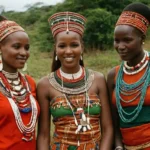 Kenyan Traditional Clothing: A Celebration of Tribal and Cultural Diversity
Kenyan Traditional Clothing: A Celebration of Tribal and Cultural Diversity
The Modern Reinterpretation of Tradition
In recent years, Guinean traditional clothing has experienced a resurgence in popularity, not just within Guinea but also internationally. This renewed interest stems from a growing awareness of the beauty and significance of traditional garments. Designers are incorporating traditional patterns and motifs into contemporary clothing, creating a fusion of heritage and modernity.
For example, the Bazin Riche, a popular fabric in West Africa, is now being used to create modern and stylish outfits, often featuring traditional Guinean patterns and embellishments. The Buba, a long-sleeved tunic, has evolved from a practical garment to a stylish statement piece, with variations in fabric and design.
The modern interpretation of Guinean traditional clothing is not simply about replicating past styles but about creating a dialogue between tradition and contemporary aesthetics. It allows for the preservation of cultural heritage while keeping it relevant to the modern world.
The Significance of Traditional Clothing: Beyond Aesthetics
Guinean traditional clothing is more than just a visual expression; it is a tangible link to the past, a symbol of identity, and a powerful tool for cultural preservation. The intricate details and symbolic meanings embedded in these garments serve as a bridge between generations, ensuring that traditions are passed down and celebrated.
A Celebration of Cultural Identity
Wearing traditional clothing is a powerful way for Guineans to express their cultural identity. It allows them to connect with their heritage, their ancestors, and their community. It is a source of pride, a symbol of belonging, and a reminder of their shared history and values.
A Tool for Cultural Preservation
In a rapidly changing world, the importance of cultural preservation cannot be overstated. Traditional clothing serves as a crucial means of safeguarding cultural heritage. By wearing and celebrating traditional garments, Guineans contribute to the survival and transmission of their cultural knowledge and traditions.
Frequently Asked Questions
What is the most common traditional clothing in Guinea?
While different ethnic groups have their own distinct clothing styles, some of the most common traditional garments in Guinea include the Buba (long-sleeved tunic), the Boubou (flowing robe), and the Pagne (wrapper).
Where can I find Guinean traditional clothing?
Guinean traditional clothing can be found in local markets and shops throughout the country. You can also find online retailers specializing in African clothing.
What is the significance of the colors used in Guinean traditional clothing?
The colors used in Guinean traditional clothing often hold symbolic meanings. For example, red symbolizes courage and strength, while blue represents peace and tranquility. Different ethnic groups may have their own interpretations of colors, but they generally convey cultural values and beliefs.
Guinean traditional clothing is a rich and diverse expression of the country’s cultural heritage. From the vibrant colors and intricate patterns to the deep symbolic meanings embedded in each garment, traditional clothing serves as a tangible link to the past and a powerful symbol of identity.
As the nation continues to embrace its traditions, Guinean traditional clothing will continue to be a vibrant tapestry that weaves together the past, present, and future of its people.
